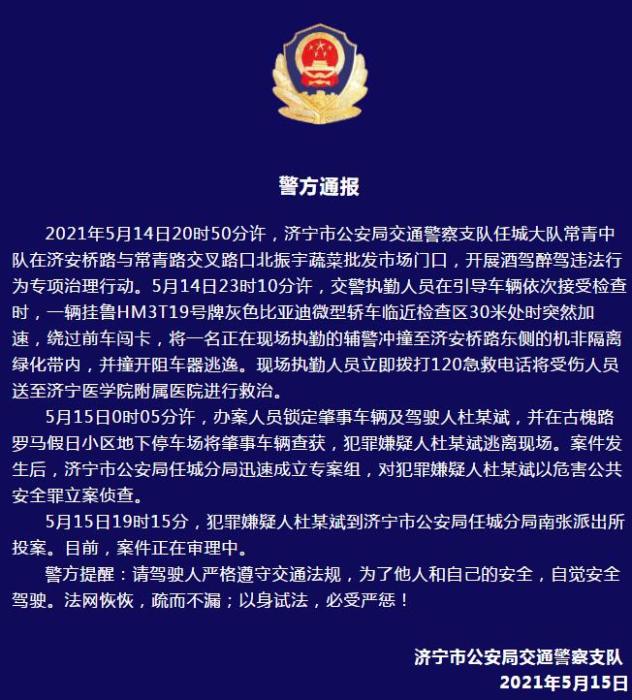最新要闻
- 天天动态:著名配音艺术家苏秀去世 享年97岁:曾为上影动画《天书奇谭》配音
- 天天播报:苹果MFi认证 iPhone快充线23.9元:自动匹配iOS版本 不弹窗
- 手慢真的无了!杰士邦镇店之宝大促:原价169.9元券后19.9
- 【当前热闻】男子新买百万奔驰被朋友借走撞烂:保险拒赔!最终结局意外
- 江西南昌县发生重大交通事故 造成17人死亡22人受伤
- 【环球新视野】特斯拉车价降至史上最低!才开30公里车主委屈:销售催提车
- 每日视点!成都车主“0元购”引热议 此前还有维权车主要平分特斯拉股权
- 最资讯丨国产特斯拉大降价后车主维权 能拿到四项补偿?回应来了
- 电动救生圈亮相CES:时速15公里 续航6公里
- 《三体》动画播放量破3亿!豆瓣跌破5分 差评率高达83%
- 环球百事通!8K电视凉了?CES 2023新品少的可怜:销量份额0.15%不忍直视
- 实时焦点:安卓刷机时代落幕!开源ROM魔趣创始人宣布删库跑路
- 两款40系新卡RTX 4070/4060 Ti来了:没有最便宜 只有更便宜!
- 红到冒泡的《鹅鸭杀》 我玩起来是一点兴趣都没有
- 上次还是旧石器时代!5万年一遇彗星将造访地球:肉眼或可见
- 腾讯推出“游戏锁”功能:再也不怕《王者荣耀》号被盗了
广告
手机

iphone11大小尺寸是多少?苹果iPhone11和iPhone13的区别是什么?

警方通报辅警执法直播中被撞飞:犯罪嫌疑人已投案
- iphone11大小尺寸是多少?苹果iPhone11和iPhone13的区别是什么?
- 警方通报辅警执法直播中被撞飞:犯罪嫌疑人已投案
- 男子被关545天申国赔:获赔18万多 驳回精神抚慰金
- 3天内26名本土感染者,辽宁确诊人数已超安徽
- 广西柳州一男子因纠纷杀害三人后自首
- 洱海坠机4名机组人员被批准为烈士 数千干部群众悼念
家电
最资讯丨Java Netty框架自建DNS代理服务器教程
 (资料图)
(资料图)
前言
DNS协议作为着互联网客户端-服务器通信模式得第一关,在当下每天都有成千上亿上网记录产生得当今社会,其重要性自然不可言喻。在国内比较有名得DNS服务器有电信得114.114.114.114、阿里云得223.5.5.5,DNSPod得119.29.29.29,配置一个好的DNS服务器可以缩短请求响应时间、降低DNS劫持概率,提升上网体验。
上面这些都是互联网公用DNS服务器,本文博主教大家使用 Java Netty自建DNS代理服务器,目前网上对于使用Netty自建DNS服务器得教程良莠不齐,大多没有代理步骤,达不到博主想要得代理效果,因而创建此文。觉得本文有帮助得可以关注博主github
- https://github.com/wayn111
一、自建DNS代理服务器有哪些优势
- 域名控制:对于特定域名可以自由控制访问权限(屏蔽对特定网站访问)
- 域名记录:记录局域网内各个主机得域名访问(记录员工上网记录)
- 配置内网域名:通过自建DNS服务器可以配置内网域名,节约成本
- DNS负载均衡:通过自建DNS服务器可以轻松实现对于访问域名得负载均衡配置
- ...
二、自建DNS代理服务器代码
- 添加域名黑名单文件,
resources文件夹下添加black_list.txt文件
google.com.facebook.com.初始化 BLACK_LIST_DOMAIN
private static final List BLACK_LIST_DOMAIN = new ArrayList<>(); static { String s; try (InputStream is = DnsServer.class.getClassLoader().getResourceAsStream("black_list.txt"); BufferedReader br = new BufferedReader(new InputStreamReader(is))) { while (StrUtil.isNotBlank(s = br.readLine())) { BLACK_LIST_DOMAIN.add(s); } } catch (Exception e) { log.error(e.getMessage(), e); } } - 使用
UDP协议绑定本机53端口,并初始化ProxyUdpDNS请求代理对象
@Slf4jpublic final class DnsServer { private static final List BLACK_LIST_DOMAIN = new ArrayList<>(); static { ... } public static void main(String[] args) throws Exception { ProxyUdp proxyUdp = new ProxyUdp(); proxyUdp.init(); final int[] num = {0}; final NioEventLoopGroup group = new NioEventLoopGroup(); Bootstrap bootstrap = new Bootstrap(); bootstrap.group(group).channel(NioDatagramChannel.class) .handler(new ChannelInitializer() { @Override protected void initChannel(NioDatagramChannel nioDatagramChannel) { nioDatagramChannel.pipeline().addLast(...); } }).option(ChannelOption.SO_BROADCAST, true); int port = 53; ChannelFuture future = bootstrap.bind(port).addListener(future1 -> { log.info("server listening port:{}", port); }); future.channel().closeFuture().addListener(future1 -> { if (future.isSuccess()) { log.info(future.channel().toString()); } }); }} - 给
nioDatagramChannel.pipeline()添加ChannelHandler
nioDatagramChannel.pipeline().addLast(new DatagramDnsQueryDecoder()); nioDatagramChannel.pipeline().addLast(new SimpleChannelInboundHandler() { @Override protected void channelRead0(ChannelHandlerContext ctx, DatagramDnsQuery msg) { try { DefaultDnsQuestion dnsQuestion = msg.recordAt(DnsSection.QUESTION); String name = dnsQuestion.name(); log.info(name + ++num[0]); Channel channel = ctx.channel(); int id = msg.id(); channel.attr(AttributeKey.valueOf(String.valueOf(id))).set(msg); if (BLACK_LIST_DOMAIN.contains(name)) { DnsQuestion question = msg.recordAt(DnsSection.QUESTION); DatagramDnsResponse dnsResponse = getDatagramDnsResponse(msg, id, question); channel.writeAndFlush(dnsResponse); return; } proxyUdp.send(name, msg.id(), channel); } catch (Exception e) { log.error(e.getMessage(), e); } } private DatagramDnsResponse getDatagramDnsResponse(DatagramDnsQuery msg, int id, DnsQuestion question) { DatagramDnsResponse dnsResponse = new DatagramDnsResponse(msg.recipient(), msg.sender(), id); dnsResponse.addRecord(DnsSection.QUESTION, question); DefaultDnsRawRecord queryAnswer = new DefaultDnsRawRecord( question.name(), DnsRecordType.A, 600, Unpooled.wrappedBuffer(new byte[]{(byte) 192, (byte) 168, 1, 1})); dnsResponse.addRecord(DnsSection.ANSWER, queryAnswer); return dnsResponse; } @Override public void exceptionCaught(ChannelHandlerContext ctx, Throwable e) { log.error(e.getMessage(), e); } }); nioDatagramChannel.pipeline().addLast(new DatagramDnsResponseEncoder()); 在 new SimpleChannelInboundHandler中 解析客户端DNS查询报文, 获取访问域名信息,如果访问域名在黑名单中,则通过 getDatagramDnsResponse()直接返回 192.168.1.1的DNS响应报文,反之则通过 proxyUdp对象转发DNS查询。
ProxyUdp作为DNS查询代理类会通过send(String domain, int id, Channel serverChannel)方法传入DnsServer类收到的访问域名、DNS事务ID、serverChannel。随后包装访问域名请求DNS服务器114.114.114.114,最后通过new SimpleChannelInboundHandler将收到的DNS响应报文通过上一步传入得() serverChannel输出到客户端。
@Slf4jclass ProxyUdp { private Channel serverChannel; private Channel proxyChannel; public void init() throws InterruptedException { EventLoopGroup proxyGroup = new NioEventLoopGroup(); Bootstrap b = new Bootstrap(); b.group(proxyGroup) .channel(NioDatagramChannel.class) .handler(new ChannelInitializer() { @Override protected void initChannel(DatagramChannel ch) { ChannelPipeline p = ch.pipeline(); p.addLast(new DatagramDnsQueryEncoder()) .addLast(new DatagramDnsResponseDecoder()) .addLast(new SimpleChannelInboundHandler() { @Override public void channelActive(ChannelHandlerContext ctx) { log.info(ctx.channel().toString()); } @Override protected void channelRead0(ChannelHandlerContext ctx, DatagramDnsResponse msg) { DatagramDnsQuery dnsQuery = localChannel.attr(AttributeKey.valueOf(String.valueOf(msg.id()))).get(); DnsQuestion question = msg.recordAt(DnsSection.QUESTION); DatagramDnsResponse dnsResponse = new DatagramDnsResponse(dnsQuery.recipient(), dnsQuery.sender(), msg.id()); dnsResponse.addRecord(DnsSection.QUESTION, question); for (int i = 0, count = msg.count(DnsSection.ANSWER); i < count; i++) { DnsRecord record = msg.recordAt(DnsSection.ANSWER, i); if (record.type() == DnsRecordType.A) { // just print the IP after query DnsRawRecord raw = (DnsRawRecord) record; DefaultDnsRawRecord queryAnswer = new DefaultDnsRawRecord( question.name(), DnsRecordType.A, 600, Unpooled.wrappedBuffer(ByteBufUtil.getBytes(raw.content()))); dnsResponse.addRecord(DnsSection.ANSWER, queryAnswer); } } serverChannel.writeAndFlush(dnsResponse); } @Override public void exceptionCaught(ChannelHandlerContext ctx, Throwable e) { log.error(e.getMessage(), e); } }); } }); proxyChannel = b.bind(0).sync().addListener(future1 -> { log.info("绑定成功"); }).channel(); } public void send(String domain, int id, Channel serverChannel) { this.serverChannel = serverChannel; DnsQuery query = new DatagramDnsQuery(null, new InetSocketAddress("114.114.114.114", 53), id).setRecord( DnsSection.QUESTION, new DefaultDnsQuestion(domain, DnsRecordType.A)); this.proxyChannel.writeAndFlush(query); }} - 自建DNS服务器全部代码
@Slf4jpublic final class DnsServer { private static final List BLACK_LIST_DOMAIN = new ArrayList<>(); static { String s; try (InputStream is = DnsServer.class.getClassLoader().getResourceAsStream("black_list.txt"); BufferedReader br = new BufferedReader(new InputStreamReader(is))) { while (StrUtil.isNotBlank(s = br.readLine())) { BLACK_LIST_DOMAIN.add(s); } } catch (Exception e) { log.error(e.getMessage(), e); } } public static void main(String[] args) throws Exception { ProxyUdp proxyUdp = new ProxyUdp(); proxyUdp.init(); final int[] num = {0}; final NioEventLoopGroup group = new NioEventLoopGroup(); Bootstrap bootstrap = new Bootstrap(); bootstrap.group(group).channel(NioDatagramChannel.class) .handler(new ChannelInitializer() { @Override protected void initChannel(NioDatagramChannel nioDatagramChannel) { nioDatagramChannel.pipeline().addLast(new DatagramDnsQueryDecoder()); nioDatagramChannel.pipeline().addLast(new SimpleChannelInboundHandler() { @Override protected void channelRead0(ChannelHandlerContext ctx, DatagramDnsQuery msg) { try { DefaultDnsQuestion dnsQuestion = msg.recordAt(DnsSection.QUESTION); String name = dnsQuestion.name(); log.info(name + ++num[0]); Channel channel = ctx.channel(); int id = msg.id(); channel.attr(AttributeKey.valueOf(String.valueOf(id))).set(msg); if (BLACK_LIST_DOMAIN.contains(name)) { DnsQuestion question = msg.recordAt(DnsSection.QUESTION); DatagramDnsResponse dnsResponse = getDatagramDnsResponse(msg, id, question); channel.writeAndFlush(dnsResponse); return; } proxyUdp.send(name, msg.id(), channel); } catch (Exception e) { log.error(e.getMessage(), e); } } private DatagramDnsResponse getDatagramDnsResponse(DatagramDnsQuery msg, int id, DnsQuestion question) { DatagramDnsResponse dnsResponse = new DatagramDnsResponse(msg.recipient(), msg.sender(), id); dnsResponse.addRecord(DnsSection.QUESTION, question); // just print the IP after query DefaultDnsRawRecord queryAnswer = new DefaultDnsRawRecord( question.name(), DnsRecordType.A, 600, Unpooled.wrappedBuffer(new byte[]{(byte) 192, (byte) 168, 1, 1})); dnsResponse.addRecord(DnsSection.ANSWER, queryAnswer); return dnsResponse; } @Override public void exceptionCaught(ChannelHandlerContext ctx, Throwable e) { log.error(e.getMessage(), e); } }); nioDatagramChannel.pipeline().addLast(new DatagramDnsResponseEncoder()); } }).option(ChannelOption.SO_BROADCAST, true); int port = 553; ChannelFuture future = bootstrap.bind(port).addListener(future1 -> { log.info("server listening port:{}", port); }); future.channel().closeFuture().addListener(future1 -> { if (future.isSuccess()) { log.info(future.channel().toString()); } }); }}@Slf4jclass ProxyUdp { private Channel localChannel; private Channel proxyChannel; public void init() throws InterruptedException { EventLoopGroup proxyGroup = new NioEventLoopGroup(); Bootstrap b = new Bootstrap(); b.group(proxyGroup) .channel(NioDatagramChannel.class) .handler(new ChannelInitializer() { @Override protected void initChannel(DatagramChannel ch) { ChannelPipeline p = ch.pipeline(); p.addLast(new DatagramDnsQueryEncoder()) .addLast(new DatagramDnsResponseDecoder()) .addLast(new SimpleChannelInboundHandler() { @Override public void channelActive(ChannelHandlerContext ctx) { log.info(ctx.channel().toString()); } @Override protected void channelRead0(ChannelHandlerContext ctx, DatagramDnsResponse msg) { DatagramDnsQuery dnsQuery = localChannel.attr(AttributeKey.valueOf(String.valueOf(msg.id()))).get(); DnsQuestion question = msg.recordAt(DnsSection.QUESTION); DatagramDnsResponse dnsResponse = new DatagramDnsResponse(dnsQuery.recipient(), dnsQuery.sender(), msg.id()); dnsResponse.addRecord(DnsSection.QUESTION, question); for (int i = 0, count = msg.count(DnsSection.ANSWER); i < count; i++) { DnsRecord record = msg.recordAt(DnsSection.ANSWER, i); if (record.type() == DnsRecordType.A) { // just print the IP after query DnsRawRecord raw = (DnsRawRecord) record; DefaultDnsRawRecord queryAnswer = new DefaultDnsRawRecord( question.name(), DnsRecordType.A, 600, Unpooled.wrappedBuffer(ByteBufUtil.getBytes(raw.content()))); dnsResponse.addRecord(DnsSection.ANSWER, queryAnswer); } } localChannel.writeAndFlush(dnsResponse); } @Override public void exceptionCaught(ChannelHandlerContext ctx, Throwable e) { log.error(e.getMessage(), e); } }); } }); proxyChannel = b.bind(0).sync().addListener(future1 -> { log.info("绑定成功"); }).channel(); } public void send(String domain, int id, Channel localChannel) { this.localChannel = localChannel; DnsQuery query = new DatagramDnsQuery(null, new InetSocketAddress("114.114.114.114", 53), id).setRecord( DnsSection.QUESTION, new DefaultDnsQuestion(domain, DnsRecordType.A)); this.proxyChannel.writeAndFlush(query); }} 三、本地测试
- 修改本机DNS设置(win11),修改首选、备选DNS地址为127.0.0.1
- 打开命令行工具,执行DNS缓存清除命令
ipconfig/flushdns
自此就可以打开浏览器访问常用网站,看是否能正常访问,来验证自建的DNS服务器效果了
参考资料
- 用 Node.js 手写一个 DNS 服务器
- DNS中有哪些值得学习的优秀设计
- netty dns example
-

-

-

-

最资讯丨Java Netty框架自建DNS代理服务器教程
天天动态:著名配音艺术家苏秀去世 享年97岁:曾为上影动画《天书奇谭》配音
天天播报:苹果MFi认证 iPhone快充线23.9元:自动匹配iOS版本 不弹窗
手慢真的无了!杰士邦镇店之宝大促:原价169.9元券后19.9
天天快看点丨学习笔记——Maven的基本配置、Maven基本使用、将Maven整合到IDEA中
LeetCode 887. 鸡蛋掉落-题解分析
【当前热闻】男子新买百万奔驰被朋友借走撞烂:保险拒赔!最终结局意外
江西南昌县发生重大交通事故 造成17人死亡22人受伤
【环球新视野】特斯拉车价降至史上最低!才开30公里车主委屈:销售催提车
热讯:java多线程知识点总结
今日热门![Docker] 将容器打包成镜像、镜像分层机制详解
每日视点!成都车主“0元购”引热议 此前还有维权车主要平分特斯拉股权
环球速看:学习笔记——Maven
最资讯丨国产特斯拉大降价后车主维权 能拿到四项补偿?回应来了
电动救生圈亮相CES:时速15公里 续航6公里
《三体》动画播放量破3亿!豆瓣跌破5分 差评率高达83%
环球百事通!8K电视凉了?CES 2023新品少的可怜:销量份额0.15%不忍直视
实时焦点:安卓刷机时代落幕!开源ROM魔趣创始人宣布删库跑路
两款40系新卡RTX 4070/4060 Ti来了:没有最便宜 只有更便宜!
红到冒泡的《鹅鸭杀》 我玩起来是一点兴趣都没有
上次还是旧石器时代!5万年一遇彗星将造访地球:肉眼或可见
最新:使用KVM克隆用于Oracle DB的主机
腾讯推出“游戏锁”功能:再也不怕《王者荣耀》号被盗了
【世界快播报】AMD、NVIDIA显卡越来越贵 Intel成了救星:2000元档唯一新卡
5199元起 红魔8 Pro+明天开卖:无刘海无挖孔 观感明显好于iPhone 14 Pro
焦点速讯:AcWing395. 冗余路径
播报:在linux中通过虚拟机转发流量访问内网
每日热闻!分享2023年最新的15种JavaScript 速记技巧 【终极秘籍】
世界观点:express实现批量删除和分页
天天观点:Docker-Compose容器编排
Linux笔记03: Linux常用命令_3.4文件和目录共用命令
Python+matplotlib实现折线图的美化
当前快讯:vue-router的使用
全球最资讯丨Unity初始界面设计与人物移动代码
学习笔记——书城项目之“我的订单”功能
环球百事通!一些学习编程的优质网站
学习笔记——书城项目第六阶段之去结账功能的准备工作、去结账功能的实现
【环球快播报】“爱妻”来了!理想L7的二排空间有多大?史无前例的“皇后座”感受下
精彩看点:Docker轻量级可视化工具Portainer
热点评![概率论与数理统计]笔记:2.5 随机变量函数的分布
全球简讯:express学会CRUD
当前速递!影像机皇预定!小米13 Ultra堆料惊人:四颗5000万像素主摄
今日报丨B站地区限制破解方法
【环球报资讯】日本60岁宅男看动漫被打断对父母下狠手 啃老30年:网友吐槽二次元危害大
Spring IOC官方文档学习笔记(七)之Bean Definition继承
焦点快报!丙种球蛋白被炒到上万元 真的需要囤一点吗?
20款理想ONE新功能上线:支持3.5kW外放电、配套设备仅2999元
当前快讯:一种inlineHook检测方案
今日快讯:拖死锤子 罗永浩回应遭郑刚炮轰获圈内人士力挺:喜欢乱搞小三关系
国产屏真香!苹果也喜欢:iPhone 15/15 Plus要用京东方屏
一加11砍掉8GB丐版!员工:一加用户都喜欢大内存版本
HTML超文本标记语言1
环球快资讯丨复刻iPhone 14 Pro!乐视手机S1 Pro入网:搭载国产芯 这真不卡
世界速读:Mini LED屏加入高端笔记本阵营!硬刚OLED
环球观焦点:NOI2003 文本编辑器 题解
世界热讯:特斯拉股东要求董事会做好接班准备:以防失去马斯克
全球观察:投资人郑刚炮轰罗永浩拖死了锤子 罗永浩回应:严重失实
能流畅用4年不卡的骁龙8系手机来了!一加11下周首销:3999元
热讯:老雷筹拍《角斗士2》
靳东宋佳主演电视剧《纵有疾风起》热播:moto razr折叠屏抢镜
即时:普及150W秒充 真我GT Neo3手机12GB大内存版直降600元
天天速看:女子表白领导被拒后每天在公司摸鱼 还免被裁引热议:网友吐槽道德绑架
[Docker]使用Docker开启一个MariaDB服务并在宿主机里访问服务
当前速读:小鹏P7喜提开年首次OTA:新增“神仙级”NGP车道定位功能
极其反常!欧洲多国冬天像夏天:多处滑雪胜地闹雪荒
专业鼻腔护理 海元素生理性盐水鼻腔喷雾器60ml 12.23元包邮
特斯拉再降价!Model3创历史新低:你还等“Model 2”吗?
专家建议不要生吃可生食鸡蛋:有健康风险
全球微资讯!以小见大:由低代码的发展,窥企业数智化转型之路
关注:阿凡达2回本!卡梅隆确认拍续集:剧透《阿凡达3/4/5》剧情/进度
【天天报资讯】e平台3.0首车 比亚迪海豚12月热销2.6万:本田飞度彻底被打趴
最新消息:投资人郑刚炮轰罗永浩:拖死锤子、不懂感恩,将联合发起回购
宝岛眼镜旗舰店抄底:镜框+防蓝光近视镜片99元包邮
开五天 一天降一万老车主泪奔维权!特斯拉国产车降价为冲量 拒绝补偿
当前快讯:全球变暖加剧:专家称本世纪末全球三分之二冰川或消失
全球简讯:21岁网红庄慕卿车祸身亡 逆向行驶还翘头致两车相撞4人遇难:网友称禁止摩托车
环球微速讯:Codeforces Round #842 (Div. 2) A-E
焦点速读:使用KVM创建OEL虚拟机
别只用来发电了 太阳能制氢突破!10倍效率 成本还更低
全球即时看!全球首个全功能无线底座问世:干掉线缆 满足4K/60Hz带宽
今头条!豆瓣9.6分 《中国奇谭》凭什么让国漫再次封神?
全球要闻:Intel Arc A750显卡深入测试:性能RTX 3060、功耗RTX 3070
今日快讯:内网渗透-PTH&PTK&PTT哈希票据传递
天天微速讯:官方批准ARJ21国产客机改货机!最大运力10吨
天天微资讯!3.2K/165hz屏!联想第四代ThinkBook 16P发布: 配独特触点接口
每日速讯:汤姆·汉克斯谈好莱坞裙带关系:本就是家族产业
【天天播资讯】雷蛇灵刃18游戏本发布:18寸240Hz大屏、RTX 4090显卡替代台式机
特斯拉再降价 Model 3创历史新低!老车主亏哭了 山顶买车血亏6万
耗资两亿的《三体》 在《中国奇谭》面前毫无价值
内网信息收集
今日观点!day03-模块化编程
今日最新!vue中$children的理解
每日焦点!TCL华星展示最新带鱼屏模组:暗处无限接近0nit
天天热议:矿卡的阴影已经过去了 板卡一哥华硕率先表态:显卡库存已正常
全球观速讯丨遇到查酒驾猛打方向盘 结果巧了:直接一步到位
全球快资讯:无视油车 特斯拉Model Y成英国12月最畅销汽车
世界播报:售价超2万元!世界首款真无线电视现身CES:电池供电不插线
记录--微信调用jssdk全流程详解
最新:LaTeX 进阶语法
世界观热点:国人不再迷信日本车 日产2022年累计销量105万:同比暴跌超1/5





